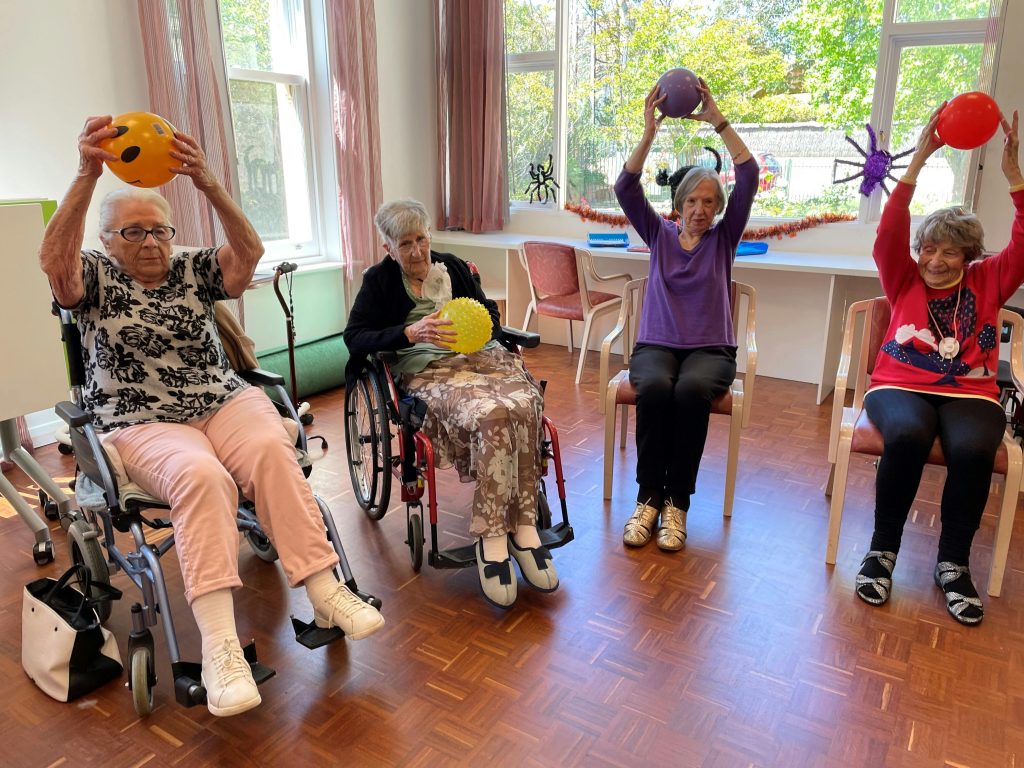Landing page is the virtual front door to your facility. Crafting a landing page that seamlessly blends art and science is essential for capturing the attention of potential residents and their families. This comprehensive guide, structured using the MECE (Mutually Exclusive, Collectively Exhaustive) framework, explores the intricacies of creating effective landing pages specifically tailored for assisted living facilities. By addressing both the artistic elements that evoke emotion and the scientific components that drive conversions, this guide is poised to elevate your landing page strategy and outrank competitors on Google.
I. Understanding the Purpose of Assisted Living Landing Pages
A. Artistic Elements
Emotional Connection
- Visual Storytelling: Utilize compelling images and videos that showcase the warm and inviting environment of the facility.
- Testimonials and Success Stories: Feature authentic stories from residents and their families to build trust and emotional connection.
Establishing a Unique Brand Identity
- Branding Elements: Consistently incorporate facility branding, including logo, colors, and fonts.
- Unique Selling Proposition (USP): Clearly communicate what sets your assisted living facility apart from others.
B. Scientific Components
Conversion-Focused Design
- Clear Call-to-Action (CTA): Position prominent and compelling CTAs to guide visitors toward desired actions, such as scheduling a tour or contacting the facility.
- Logical Flow: Design a layout that leads visitors through a logical sequence of information, ensuring a seamless experience.
Mobile Responsiveness
- Responsive Design: Optimize the landing page for various devices, particularly ensuring a user-friendly experience on mobile devices.
- Load Times: Prioritize fast load times to prevent potential residents and their families from bouncing due to slow page speed.
II. Key Elements to Include on Your Landing Page
A. Artistic Elements
Engaging Visuals
- Hero Image or Video: Feature a captivating hero image or video that encapsulates the essence of the assisted living facility.
- Photo Galleries: Showcase various areas of the facility, including common spaces, resident rooms, and outdoor amenities.
Resident-Centric Approach
- Resident Activities: Highlight recreational activities and events to portray a vibrant and active community.
- Staff Inclusion: Introduce staff members through images and brief profiles to convey a sense of personalized care.
B. Scientific Components
Informational Clarity
- Facility Overview: Provide a concise overview of the facility’s services, amenities, and care offerings.
- Pricing Information: If feasible, include transparent pricing details to address a common concern for families.
Forms and Inquiries
- Contact Forms: Implement user-friendly contact forms with clear fields to encourage inquiries.
- Lead Magnets: Offer downloadable resources, such as brochures or guides, in exchange for visitor information.
III. Crafting Compelling Content
A. Artistic Elements
Evocative Headlines and Copy
- Emotional Appeal: Craft headlines that evoke positive emotions and resonate with the desires of potential residents and their families.
- Storytelling: Use narrative techniques to tell compelling stories about the facility, residents, and staff.
Consistent Brand Messaging
- Tone and Voice: Maintain a consistent tone throughout the content, aligning with the overall brand personality.
- Language Accessibility: Ensure that the language used is accessible and relatable to a diverse audience.
B. Scientific Components
SEO-Optimized Content
- Keyword Integration: Infuse relevant keywords naturally within the content to enhance search engine visibility.
- Meta Tags: Craft compelling meta titles and descriptions that encourage clicks from search engine results pages (SERPs).
Highlighting Benefits and Features
- Benefits-Centric Approach: Emphasize the benefits of choosing your facility rather than solely listing features.
- Bullet Points and Tables: Use bullet points and tables to present information concisely and enhance readability.
IV. Building Trust Through Transparency
A. Artistic Elements
Trust Badges and Certifications
- Accreditations: Display any industry accreditations or certifications that reinforce the facility’s commitment to quality care.
- Awards and Recognitions: Showcase any accolades received, instilling confidence in the facility’s reputation.
Authentic Imagery
- Real Residents and Staff: Use genuine images of residents and staff rather than relying solely on stock photos.
- Virtual Tours: Incorporate virtual tours to provide an authentic and immersive experience.
B. Scientific Components
Testimonials and Reviews
- Testimonial Placement: Strategically place positive testimonials throughout the landing page.
- Review Widgets: Embed review widgets from reputable platforms to showcase real-time feedback.
Privacy and Security Assurance
- Data Security: Provide reassurance regarding the security of personal information submitted through forms.
- Privacy Policy: Clearly link to the facility’s privacy policy to communicate transparency.
V. Implementing User-Friendly Navigation
A. Artistic Elements
Intuitive Design
- Navigation Menu: Design a clear and concise navigation menu that directs visitors to essential sections.
- Interactive Elements: Include interactive elements, such as scrolling animations or hover effects, for an engaging experience.
Aesthetically Pleasing Layout
- Whitespace: Utilize whitespace effectively to prevent a cluttered appearance and enhance readability.
- Color Psychology: Apply colors strategically to evoke specific emotions and convey a welcoming atmosphere.
B. Scientific Components
User Journey Mapping
- Visitor Flow: Map out the expected user journey, ensuring that visitors can easily find information and take desired actions.
- Heatmaps and Analytics: Utilize heatmaps and analytics tools to identify user behavior and optimize the landing page accordingly.
Mobile-Friendly Design
- Responsive Elements: Ensure that all interactive elements and forms are fully functional on mobile devices.
- Thumb-Friendly CTAs: Position CTAs within easy reach for users on mobile screens.
VI. Optimizing for Local Search
A. Artistic Elements
Local Imagery
- Local Landmarks: Incorporate images of nearby landmarks or attractions to showcase the facility’s connection to the community.
- Community Engagement: Highlight the facility’s involvement in local events or partnerships.
Personalized Welcome
- Personalized Greetings: Implement geotargeting to greet visitors based on their location, creating a personalized experience.
- Local Language Integration: Infuse regional nuances in the content to resonate with the local audience.
B. Scientific Components
Google My Business Integration
- Accurate Information: Ensure that the landing page information aligns with the details on Google My Business.
- Local Keywords: Include location-specific keywords within the content for improved local search visibility.
Local Reviews and Testimonials
- Community Endorsements: Showcase positive feedback from residents and families within the local community.
- Local Review Platforms: Encourage reviews on local platforms, contributing to a strong online reputation.
VII. Measuring and Analyzing Landing Page Performance
A. Artistic Elements
Emotional Analytics
- Emotion Tracking Tools: Explore tools that analyze user emotions during their interaction with the landing page.
- Heatmaps: Use heatmaps to identify areas of high engagement and user interest.
B. Scientific Components
Conversion Tracking
- Google Analytics Goals: Set up conversion tracking to measure specific actions, such as form submissions or phone inquiries.
- A/B Testing: Conduct A/B tests on elements like CTAs and headlines to determine optimal performance.
User Behavior Analysis
- Session Recordings: Analyze session recordings to understand how users navigate the landing page.
- Exit Surveys: Implement exit surveys to gather feedback from visitors who did not convert.
VIII. Compliance with Regulatory Standards
A. Artistic Elements
Clarity in Information
- Legal Language Simplification: Ensure legal disclaimers and terms are presented in a clear and understandable manner.
- Accessibility Features: Incorporate accessibility features, such as alt text for images, to accommodate diverse audiences.
B. Scientific Components
HIPAA Compliance
- Secure Form Handling: Implement secure protocols for handling sensitive information submitted through forms.
- HIPAA Statement: Include a statement indicating compliance with HIPAA regulations regarding resident privacy.
IX. Conclusion
In the intricate dance between art and science, effective landing pages for assisted living facilities must harmonize aesthetics with functionality. By integrating emotional appeal with data-driven precision, your landing page can stand out in a competitive online landscape. Embrace the principles outlined in this guide, continuously refine based on analytics, and witness not only improved search rankings but also increased engagement and conversions. Your assisted living facility deserves a landing page that not only captures attention but also resonates with the hearts and minds of those seeking compassionate care and a nurturing community.



